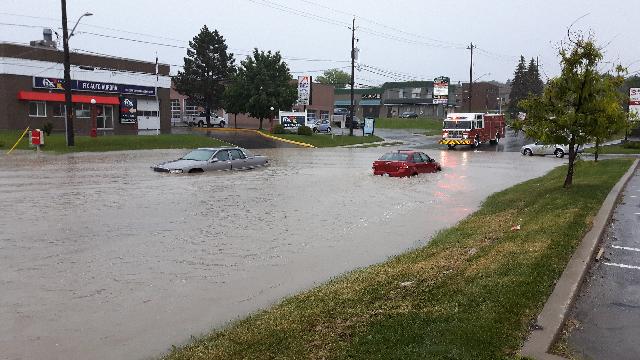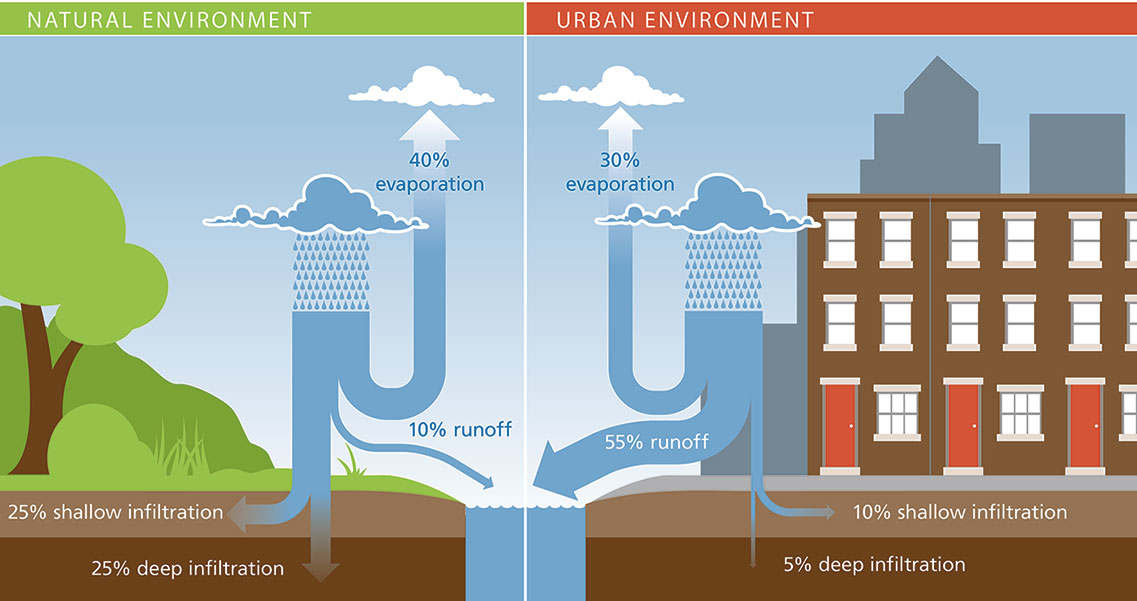Stormwater
Stormwater
Stormwater is a relatively simple concept; it refers to precipitation (rainwater, melting snow) that accumulates after a storm.
Stormwater runoff, the result of what happens to stormwater once it hits the ground, particularly when it falls on paved and other hardened surfaces, is a significant environmental concern.
Stormwater runoff in natural areas is generally of minor environmental consequence. In natural areas, stormwater runoff soaks relatively quickly and easily into the ground, is absorbed by trees and plants and evaporates into the air. A small amount runs along the ground and ends up going directly in streams, rivers and the lake.
The same is not true in urban areas. Hardened surfaces do not let stormwater runoff seep into the ground, so instead it travels over roofs, roads, parking lots, as well as lawns. The stormwater picks up pollutants like dirt, oil, heavy metals, bacteria, fertilizer, grass-clippings, pet waste, litter etc. and carries substantially more polluted runoff to our rivers and waterways.
While both rural and urban stormwater runoff eventually ends up in our streams, rivers, and ultimately Lake Simcoe, urban stormwater is more problematic, not only because of the much larger volumes of runoff, but because of the pollutants captured and then carried in that runoff.

Stormwater management is the practice of addressing stormwater runoff.
![]() Soil Filters Water
Soil Filters Water
Did you know that soil is an important natural water filter? Soil removes many substances from water, some of which are taken back up by plants.
 A New Way to Manage Stormwater
A New Way to Manage Stormwater
We’re engaged in a ground-breaking research study in an effort to improve stormwater management, introduce savings, and address the impacts of urbanization, degraded water quality and climate change.
Read more about the Stormwater Economic Optimization Study

